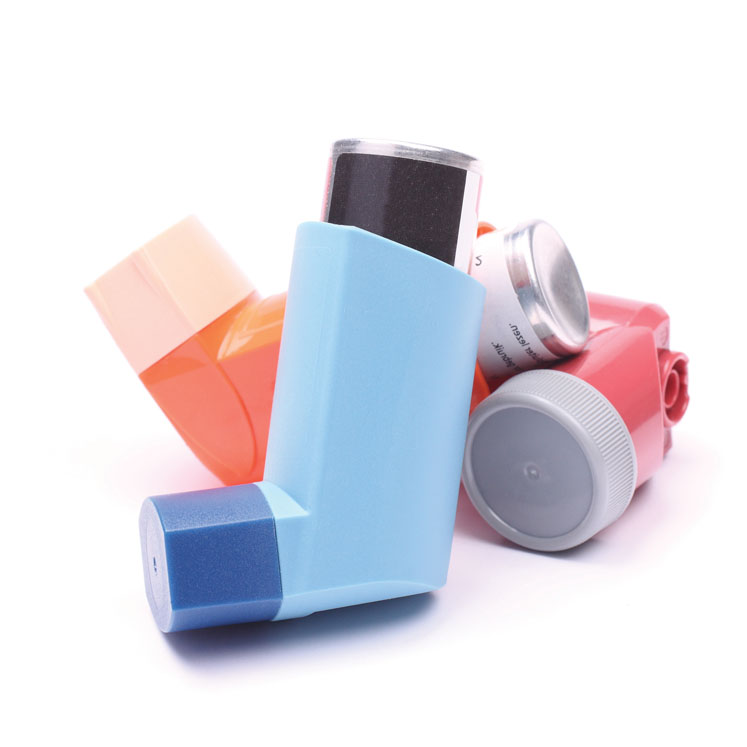For an inhaled product, although the list of approved excipients is limited when compared with tablets and other oral dose forms, the correct choice is critical if the optimal delivery profile is to be achieved.
And, when manufacturing excipients, their specifications must be tightly controlled. A good understanding of the variability involved in their production is essential to ensure that every batch meets specified standards.
Monitoring the manufacturing process — for each batch — is important if they are to remain within specification. Gaining this understanding early on in a product’s development is necessary to accelerate time to market and will ensure that the required information in terms of the excipients within a formulation is readily available for the regulatory submission package.
It will also enable any problems with the input materials or process conditions to be resolved at an early stage, which will save time and money as the product is scaled-up.
Quality by design
Applying the principles of quality by design (QbD) to excipients greatly assists the development process. The drug product’s quality target product profile (QTPP) sets out the critical quality attributes (CQAs), which are referred to and refined throughout the development process, resulting in the final drug product specification.
Both the critical material attributes (CMAs) of the excipients and the critical process parameters (CPPs) of the manufacturing process are important factors when it comes to understanding and defining the design space.
Even if the CPPs are fixed, variability in the input materials can lead to variability in the output drug product. For any successful drug development programme, understanding the relationship between the CQAs, the CMAs and the CPPs is crucial.
If consistent drug performance is to be maintained throughout the product’s lifecycle, any excipient control strategy must include the specification and definition of all the criteria by which any changes are evaluated and managed.
Input CMAs should be monitored on an ongoing basis and mapped to the CPAs for drug product performance. This will help to determine process capability and maintain consistent drug product performance.
The challenges facing excipient suppliers are amplified for inhalation products. There are obvious advantages and disadvantages when taking a QbD approach to excipient product development and lifecycle management for material suppliers: it provides clearly defined specifications, alongside a framework for managing and controlling changes throughout the product’s lifecycle.
However, the volume requirements are relatively low for inhalation products. The specification requirements are not only very precise, they are frequently bespoke and, as a result, can be difficult to adhere to.

From the drug product manufacturer’s perspective, however, taking a QbD approach to excipients gives a more efficient pathway for the product’s development. It provides greater assurance that the excipients will be made in a robust manner, with a reduction in product variability and, therefore, rejections and product recalls will be less likely to occur.
Any problems that do occur are more likely to be resolved proactively and efficiently … and QbD offers the benefit of a structured change management framework.
Limited choice
The palette of approved excipients for the formulation of dry powder inhalers is decidedly limited, with lactose and magnesium stearate being by far the most widely compounds used in inhaled drug products.
As it is the most frequently used excipient in dry powder inhalers, suppliers of lactose monohydrate have worked closely with regulators for many years on the problems of inhalation specifications.
Together, a comprehensive specification for inhalation-grade lactose has been established that far exceeds the scope of simple pharmacopoeial testing. The specification also includes impurities, protein content and amorphous content.
Magnesium stearate was initially proposed as an additive for inhaled formulations in the early 1990s, with the idea that it would bind to the carrier particles and reduce the interparticulate forces to facilitate the release of the active pharmaceutical ingredient, resulting in an increased fraction of the drug delivered to the lung.
Such additives are termed “force control agents” or FCAs. Subsequently, the thinking evolved that a composite particle might be possible, such that the magnesium stearate is bound to the inhalable active particle and reduces the cohesive forces between the particles.
Magnesium stearate has been successfully used in a number of commercial products and, to date, the industry has yet to identify a better FCA.
Magnesium stearate first received approval for use in Chiesi’s Pulvinal respiratory product in 1999, wherein the magnesium stearate is applied to the lactose carrier particles. As of 2021, a further nine respiratory products from Novartis and GSK also use magnesium stearate.
Although various other excipients have been used in development studies and clinical trial supplies, particularly those involving spray-dried powders, as yet, none have been approved for inclusion in a product that has reached the market.
The excipients that have been explored in early development projects includes various alternative carbohydrates, such as cyclodextrins, maltodextrins and trehalose. Amino acids have also been used, notably leucine and its dimer and trimer.
Surfactants such as phospholipids and polymers that are already familiar in oral doses, including poly lactic and glycolic acid polymers and copolymers (PL/GA) and polyvinylpyrrolidone (PVP) also feature on the list.
However, none have reached commercial application in inhaled products. Gaining approval for a new excipient is a very slow and expensive process … and represents a significant barrier to entry. This is only likely to change if there is a very obvious advantage in using a new excipient that would make the investment of money and time worthwhile.

The desire for innovation in excipients for inhaled products — and the stringent requirements of the regulatory authorities — remain at odds with each other. The regulators, naturally, demand multiple trials to be done to prove any new excipient’s safety and efficacy; and, even if an excipient is already approved for oral dosage forms, substantial additional work will be required to gain approval for inhaled products.
It is, perhaps, unsurprising that pharma companies remain reluctant to design a new inhaled product using a novel excipient … and any benefits they might ultimately offer to patients are not realised.
Critical parameters
When considering the individual items included within excipient specifications, particle size distribution is by far the most important parameter for inhaled products, as this must be tightly controlled. A product manufacturer should work closely with its excipient supplier as it will need to be aware of all the analytical procedures in place for release testing.
Any offset in the results of analyses that are evident at the receiving facility may result from differences in equipment or methods; knowledge of these is critical to understanding any analytical variability and, therefore, variability in the excipient itself.
This information is necessary if targets are to be set effectively for the range of batches required for a QbD approach, ensuring that batches are indeed different and don’t just fall within the scope of the variability.
The scale of development batches for inhalation products is invariably smaller than the size of a commercial batch of an excipient. This mismatch in scale poses significant challenges when developing a drug product, as the feasibility of fully evaluating excipient CMAs from a range of input batches may well be limited by both the cost of purchasing and the logistics of storing the multiple batches a QbD approach demands.
If smaller-scale excipient batches are used instead, this may not fully represent the materials that will ultimately be used when the product reaches the scale required for clinical and commercial manufacture.
The new International Pharmaceutical Excipients Council (IPEC) QbD guidance, “Incorporation of Pharmaceutical Excipients into Product Development using Quality-by-Design (QbD),” represents an important step forward for excipients in general and the inhaled products that they are used in.1
It gives both suppliers and manufacturers a consistent framework and a common understanding that connects data about the drug substance and the product development guidance provided by both ICH and the various regulatory authorities.
It should, as a result, facilitate a close working relationship between excipient suppliers and their customers, and therefore lead to the development of robust pharmaceutical products.
Reference
- www.ipec-europe.org/articles/ipec-quality-by-design-guide.html.
